Blog Goals - How to Set Realistic Growth Targets
By Nicolas Jacobeus on August 5, 2021
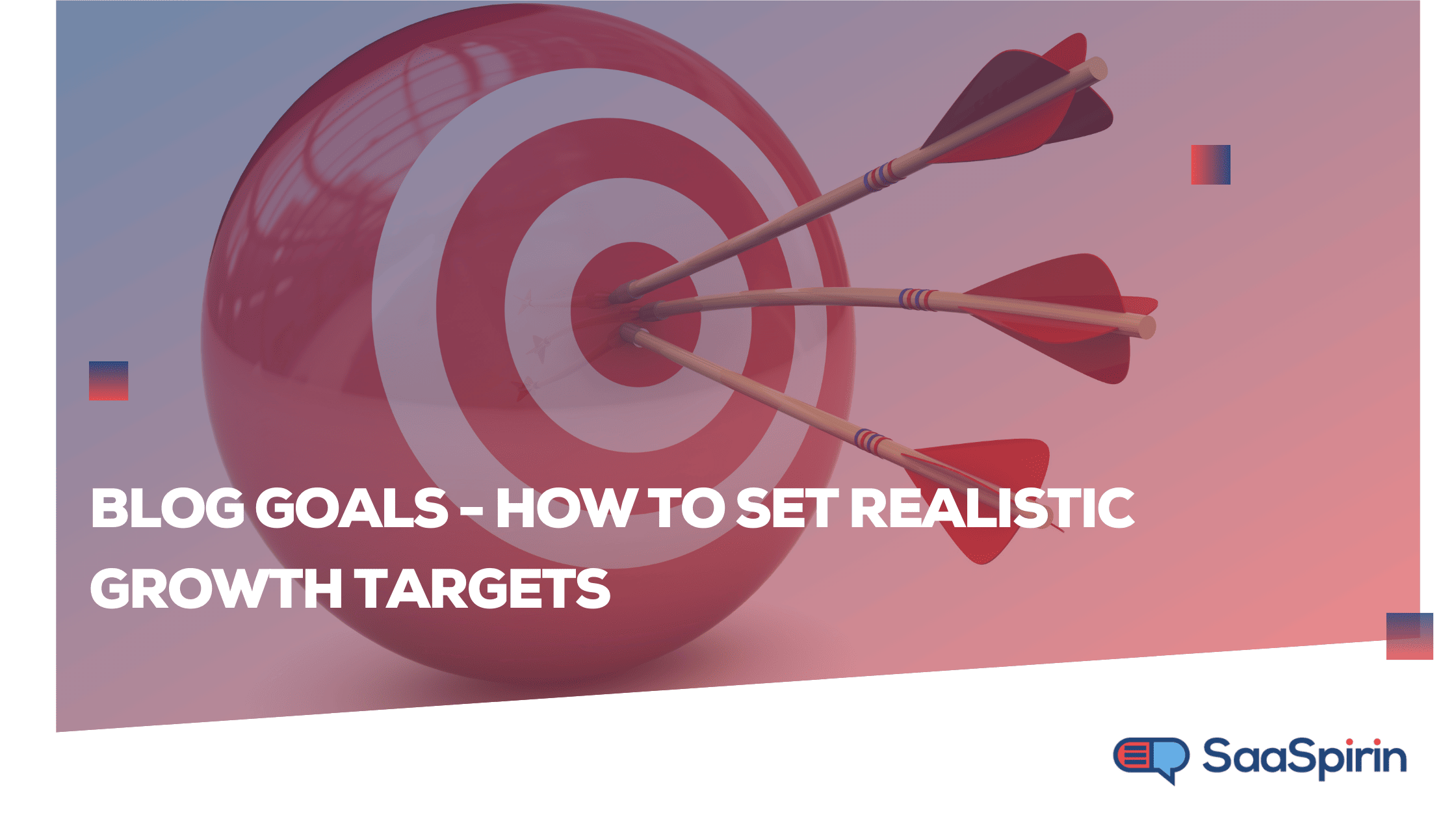
A healthy rate of growth for blog traffic is thought to be 6% month-over-month. As Neal Schaffer points out, this will double your blog traffic in one year.
But should 6% monthly traffic growth always be your target? What about setting blog goals for conversions?
There are times when it doesn’t make sense to target generic blog goals. In fact, your growth targets next year will likely be different from the ones you set for this year.
Growing your blog takes patience and knowing what to focus on when. So let’s chat about your goals for your blog.
3 factors to consider when setting blog goals
The goal that makes sense for another company may not be the right one for you. Your blog goals must take into account three things:
- What stage your blog is at now. It’s much harder to make headway when your blog is small.
- What resources you have at your disposal. A bigger budget or team will usually bring results faster.
- How competitive your industry is. A more competitive industry is going to take more time and more resources, while a less competitive industry will let you make headway faster.
Let’s look at a couple examples to see what objectives you can achieve at different stages of a blog’s growth.
Different stages require different objectives
Going from zero to 1,000 pageviews is a big leap. Likewise, growing your blog traffic from 1,000 to 5,000 can feel like it’s taking forever, too. However, if you’ve laid the groundwork with solid SEO work, you’ll start to see larger increases as time goes on and organic search rankings compound.
Enjuris.com, which operates in the super-competitive legal industry, now enjoys well over 100,000 pageviews per month. But progress came very slowly in its first year.
Blogs with less than 5k pageviews per month
When your blog is in the early stages, under 1,000 pageviews per month, your objective should be to get to know the content that resonates with your ideal target audience.
Enjuris only increased monthly pageviews from 883 to 1,190 in the first six months of publishing to its knowledge center and blog.
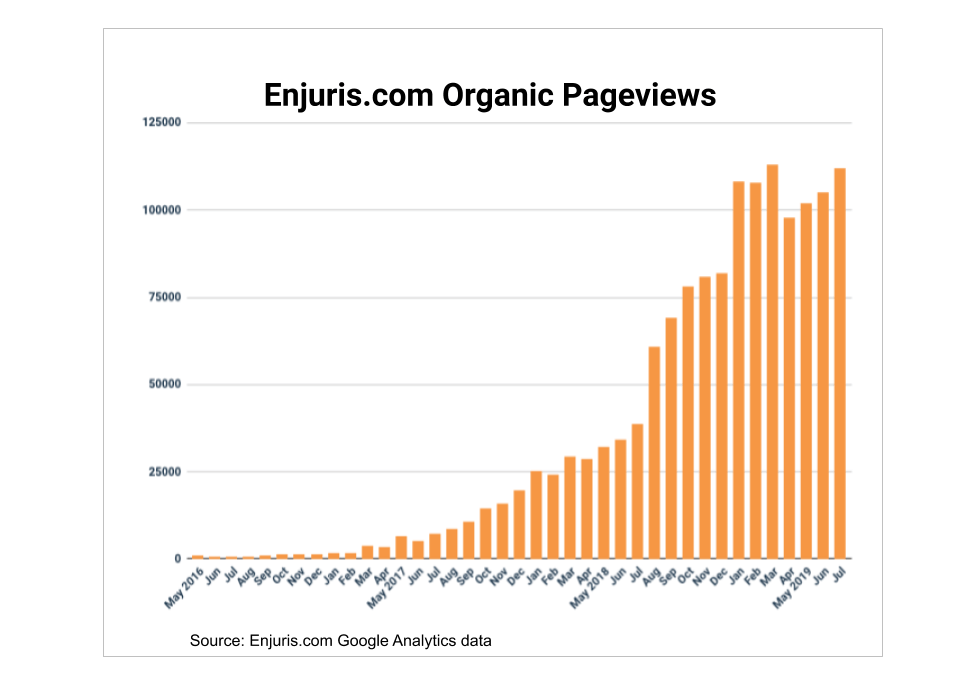
Enjuris monthly pageviews took a long time to grow but then compounded. (Image source: Alexa.com)
During this time, the project leader and three writers tried out various types of content: standard blog posts as well as customer stories targeting social shares and blog posts curating quotes from influencers, for example. This helped the team spot the content that seemed to strike a chord, all while producing search-optimized guides.
This stage of very slow growth, which blogger Alex Nerney calls the “poop phase,” may last six months for you, or it may take years. For the content team at Enjuris, it lasted a year.
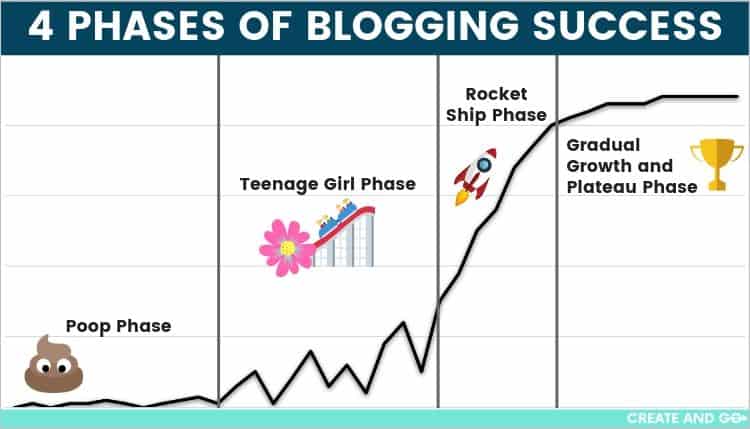
Source: The 4 Phases of Online Blogging Success: Poop to Profits
After a year, the Enjuris team broke out with a yearly report on a hot topic. The site started gaining links, and then it consistently received over 5,000 pageviews monthly. That proved to be a critical point for the blog’s growth. After that, the blog’s traffic growth averaged 30% month over month, thanks to its solid foundation in search optimized content.
Blogs with 5k-50k pageviews per month
Once you’ve crossed the line to 5,000 monthly pageviews with your blog, you can afford to be more aggressive with your blog goals. Think of it like you’ve found product-market fit for your blog - now you know what your customers want to read from you and you can double down on building your traffic. Doubling your traffic in a year may be a significant and reachable goal for you at this point.
Daisy Quaker was handed the goal of increasing traffic to her company’s blog, which already had 5,000 pageviews per month. In that first year, her team focused on SEO to lay a foundation for organic traffic growth. It took that whole year to move from 5,000 to 10,000.
In the second year, traffic to the blog grew 7x. Within three years, they reached 100,000 pageviews per month.
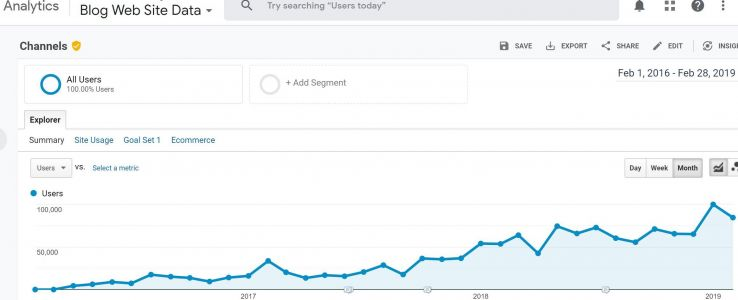
Daisy Quaker led her content team to grow blog traffic by 650% in two years - organically. (Source: Moz.com)
Thanks to the compounding effect of organic traffic, growth accelerates over time. This meant that in Daisy’s team’s second year, they could focus on another goal: driving email signups.
Conversions as a blog goal
The reason you started a blog was to support and grow your business. It should position you as an authority in your industry, help you grow awareness of the solution you offer, and ultimately drive more trial signups and customers.
So once you’re on your way to meeting traffic goals, it’s time to optimize for conversions. One of the best places to start is by converting readers to email subscribers.
Converting readers to subscribers
When a reader subscribes to your blog, they’ve raised their hand and said they’re interested in what your company has to say. They can become a lead, or even just a fan. And both are very valuable when you’re trying to grow your business.
Daisy’s team focused on growing their email subscriber list in year two, after they had reached 10,000 pageviews per month. They increased it by 44%. (Neal Schaffer suggests setting 50% as a target.)
Then, in year three, they focused on improving the blog’s contributions to sales.
Converting readers to trial and paid users
Sharon Hurley Hall says that “great content is your bedrock” when it comes to attracting and converting readers to trial users.
Absolutely set goals for your blog to convert readers into trial users and paying customers. Typically this aspect of performance becomes easier to optimize after you’ve figured out what topics resonate with your readers and you’ve established organic traffic to your blog. Then your calls to action can do their work.
The goals you set for conversions should be based on your current performance and the increases you think you can bring about by optimizing elements within your control.
Set small goals to reach your big goals
Before you can start gaining new customers from your blog, people need to find and read it. That’s why traffic goals are useful. It’s even more useful to set goals for the activities that are going to bring traffic.
For example, you can set goals to:
- Publish at least eight blog posts per month (both examples above published multiple posts every week).
- Plan to incorporate two long-form optimized guides every month to target more competitive terms.
- Reach out to 10 potential contacts that might result in a link for you.
If traffic is not yet growing, you can measure early content marketing success by whether people are engaging with your content. Check your keyword rankings, as they will start to show before you begin to register traffic.
3 reasons to set blog goals
One of the biggest reasons many businesses don’t get any ROI from their blogs is that they blog for the sake of blogging—they don’t set realistic goals for their blogs. Why are goals so important to have for your blog?
1. Your goal gives you direction
One of the biggest reasons for setting blog goals is that it gives you a clear picture of what you want to achieve. How can you reach your destination if you don’t have a roadmap?
2. Your goal keeps you motivated
One of the caveats of running a blog is that it can take some time before you start seeing tangible results from your efforts. Without goals, it becomes easy to lose focus. Goals help you remember why you’re creating the content; they keep you motivated!
3. Your goal informs your content strategy
Your goals help you define your content strategy. In other words, your goals will help determine what kind of content to publish, the keywords to target, and other important facets of a good content strategy.
How to set effective blog goals the SMART way
Chances are you’ve heard of SMART goals. Using the SMART method (which stands for specific, measurable, achievable/attainable, relevant, and time-bound), you can set goals that lead to results.
Specific
One of the most critical aspects of a goal is specificity. You need to be clear about what you want to achieve and how you’ll achieve it. Here’s an example:
Goal: Increase high-authority backlinks to our site by 50% in the next six months.
How we’ll do it: We will pitch four guest posts to industry publications every month.
Avoid blog goals that sound like a general statement (increase traffic, grow SEO, publish more, etc.) They won’t get you anywhere. But by being as specific as you can, you know exactly what you’re aiming for, how you’re going to achieve it, and when you plan to achieve it.
Measurable
To know if you have achieved your goals or not, you have to be able to measure them. This is why you need to set them in such a way that measuring will be possible. In our example above, the target is a 50% increase in high-authority backlinks.
To make this measurable, you need to define what you mean by “high-authority.” This could be a domain rating of 50 and above as measured by ahrefs. And you need to know your baseline, so you can plot your progress and know when you’ve reached “50% more”.
Traffic and other goals are pretty easy to measure using analytics tools. Some, like Google Analytics, are even free. This resource highlights a wider selection of analytics tools. However, if you’re working with a content agency to reach your blog goals, they should provide you with progress reports.
Achievable/attainable
When setting your blog goals, make sure they’re achievable. Setting a far-fetched, unrealistic goal will only lead to disappointment when you miss the mark.
To set attainable goals, look at how far you’ve come and how much you’ve achieved in a particular time frame. Use this to reasonably gauge what you can achieve. For example, reaching 100,000 pageviews/month in a year is very unlikely if you’re still struggling to get to 1,000. However, a goal of 5,000 monthly pageviews in one year is attainable. This will depend on factors like the competitiveness of your industry and your resources, of course.
Relevant
Why are you running a blog? Is it to boost brand awareness? To generate leads?
Your blog goals must be connected to the “why” of your blog. The closer your blog goals are to your business (and revenue generation) goals, the more effective they’ll be. Remember, a good goal leads you closer to the “big picture” of your brand.
Time-Bound
The main difference between a realistic goal and a pie-in-the-sky goal is that the former has an expiry date. In other words, effective goals have hard time limits. In our example, we set a time limit of one year to achieve our goal. And larger goals should be broken down into smaller goals with shorter time frames to make them even more attainable.
Time limits help ensure that you take action to get things done. Otherwise, without them, you’re under no pressure to achieve your goals. You can always put them off for another day.
Keep in mind that increases rarely happen linearly. Even when it’s your goal, your blog will not grow traffic at exactly 6% every month. There may be some months where traffic actually decreases. But if you’re laying a solid foundation, then subsequent months will see much higher increases.
One more example - a different approach to blog goals
We’ve looked at a few examples and talked about typical blog goals. But content agency Grow & Convert set blog goals a little differently in their early days, before they saw gains from SEO.
They averaged their typical traffic per post and then looked at which levers they could influence. This gave them very targeted, realistic goals to work toward. It’s a healthy reminder to always look at the resources you have rather than setting arbitrary numbers that worked for someone else.
At SaaSpirin, your content strategist sets up a content roadmap for you based on your blog goals. Talk to us more about where you are and what you want to achieve with your blog today.
You May Also Like
These Related Stories
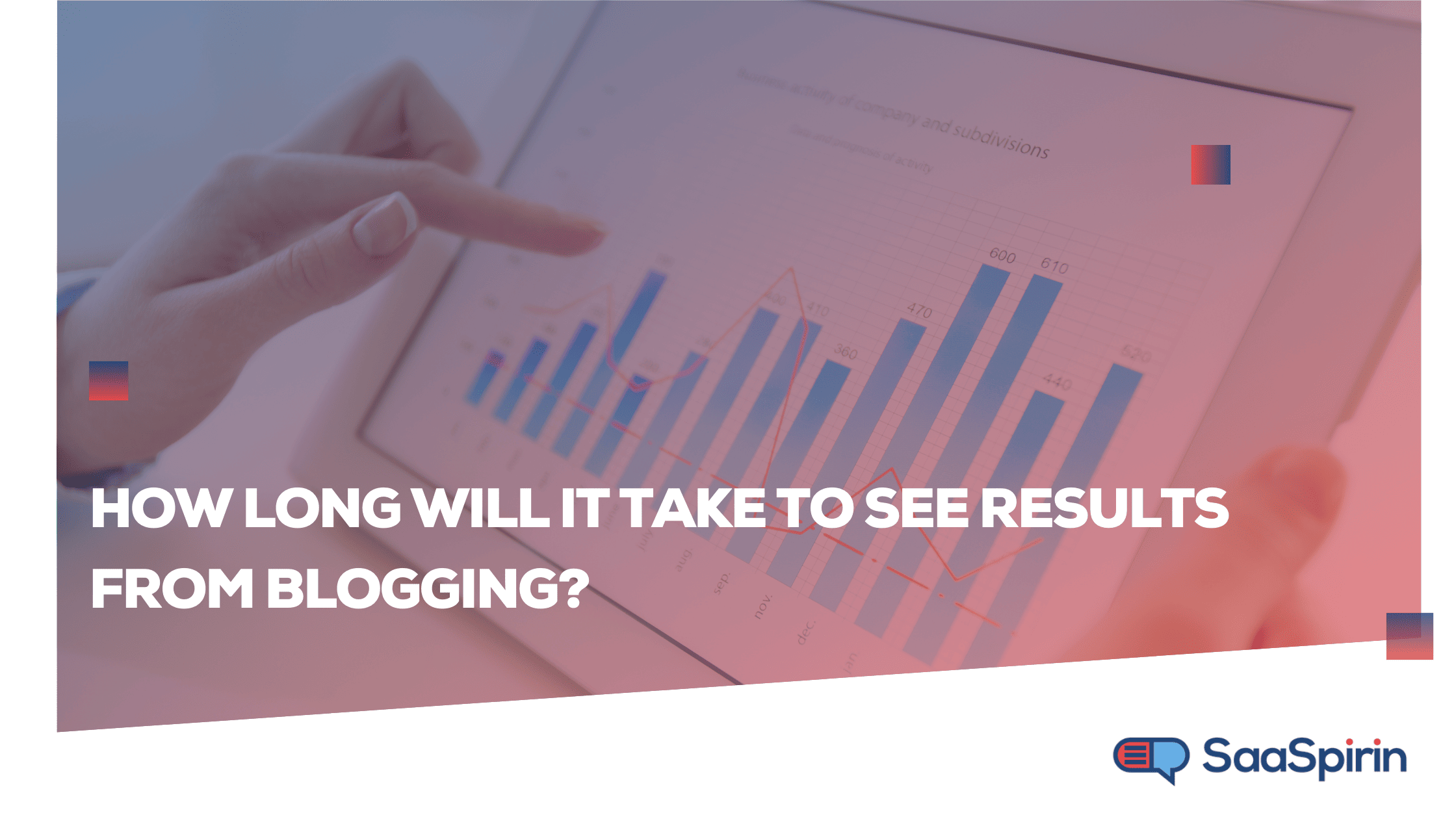
How Long Will it Take to See Results from Blogging?
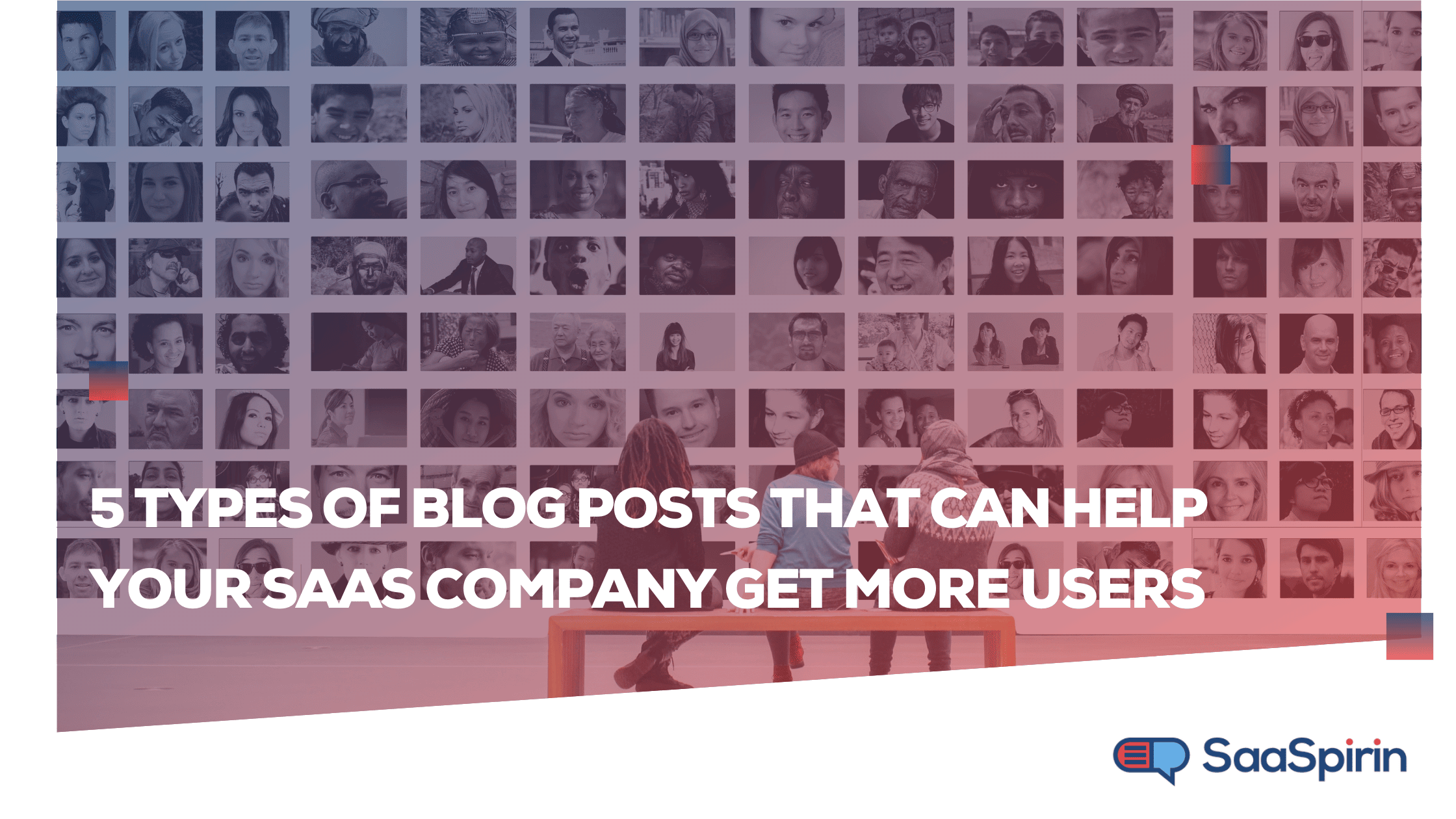
5 Types of Blog Posts that Can Help Your SaaS Company Get More Users

